Anup Sood
Automated Phenotyping via Cell Auto Training (CAT) on the Cell DIVE Platform
Jul 18, 2020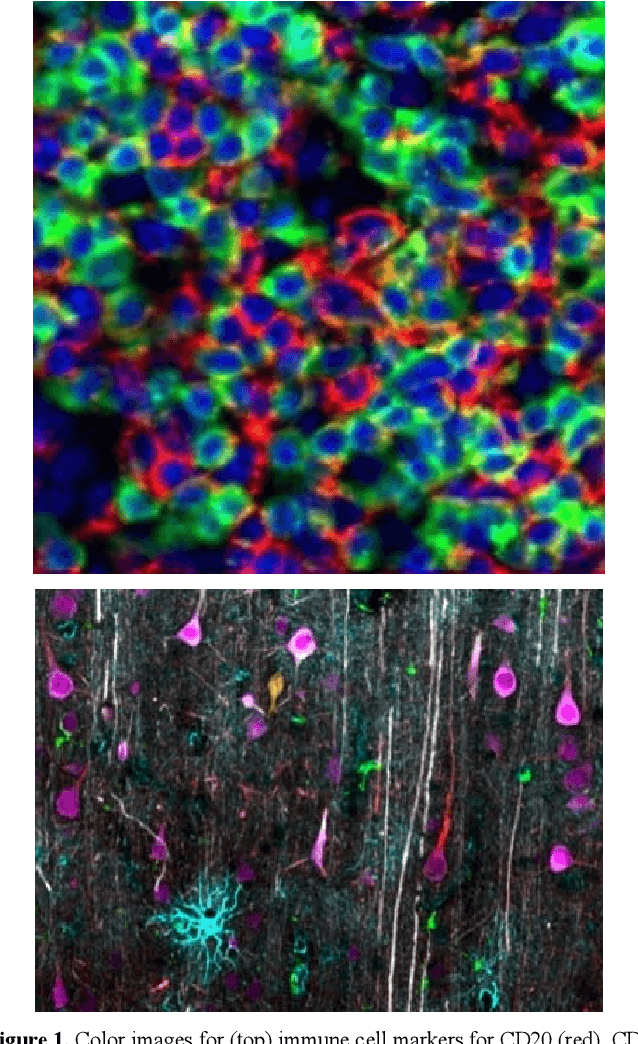
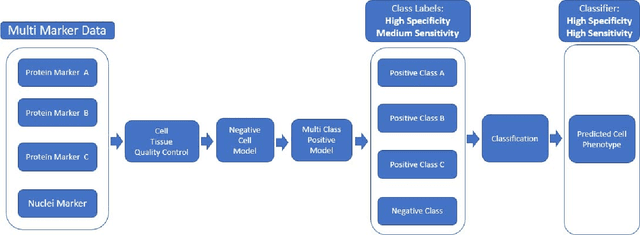
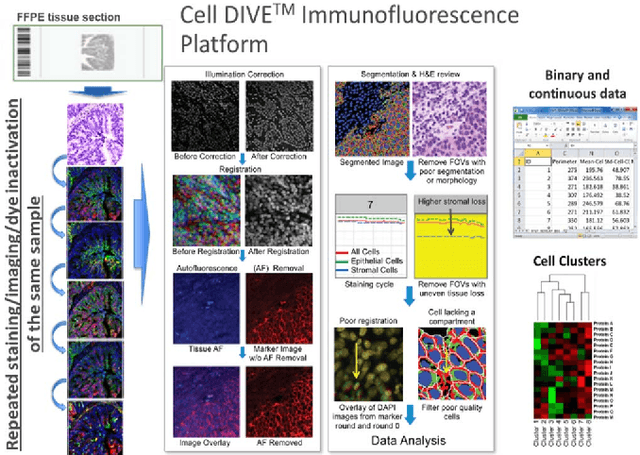
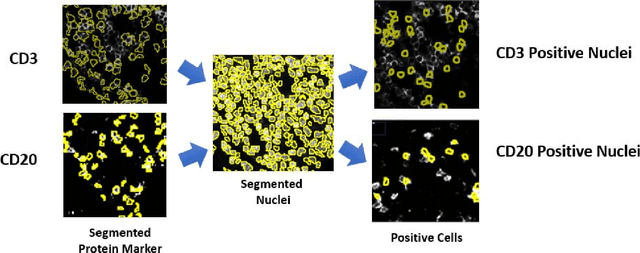
Abstract:We present a method for automatic cell classification in tissue samples using an automated training set from multiplexed immunofluorescence images. The method utilizes multiple markers stained in situ on a single tissue section on a robust hyperplex immunofluorescence platform (Cell DIVE, GE Healthcare) that provides multi-channel images allowing analysis at single cell/sub-cellular levels. The cell classification method consists of two steps: first, an automated training set from every image is generated using marker-to-cell staining information. This mimics how a pathologist would select samples from a very large cohort at the image level. In the second step, a probability model is inferred from the automated training set. The probabilistic model captures staining patterns in mutually exclusive cell types and builds a single probability model for the data cohort. We have evaluated the proposed approach to classify: i) immune cells in cancer and ii) brain cells in neurological degenerative diseased tissue with average accuracies above 95%.
* 2019 IEEE International Conference on Bioinformatics and Biomedicine (BIBM)
ESCELL: Emergent Symbolic Cellular Language
Jul 18, 2020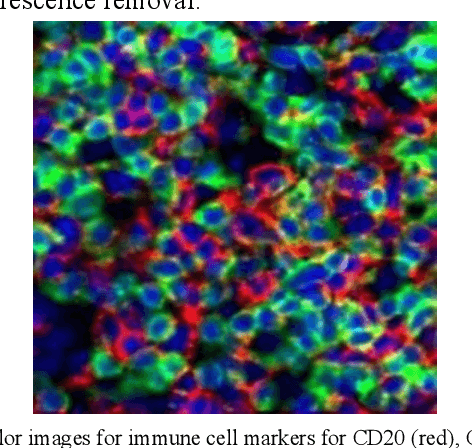
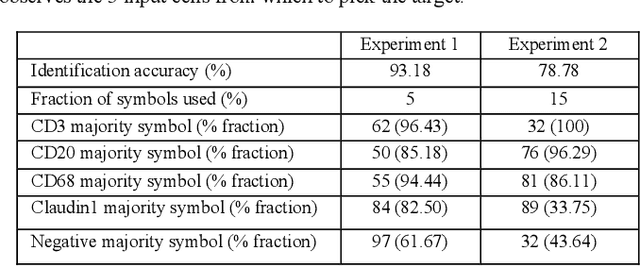
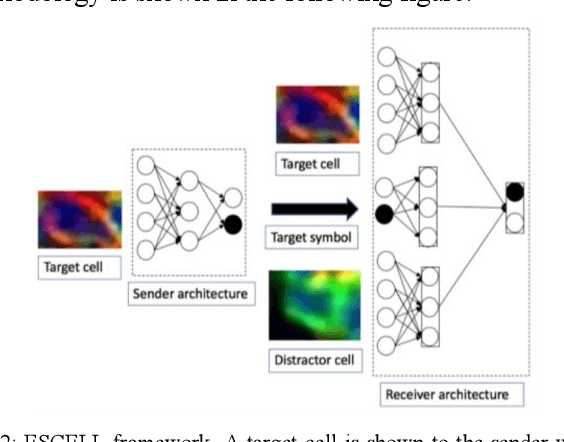
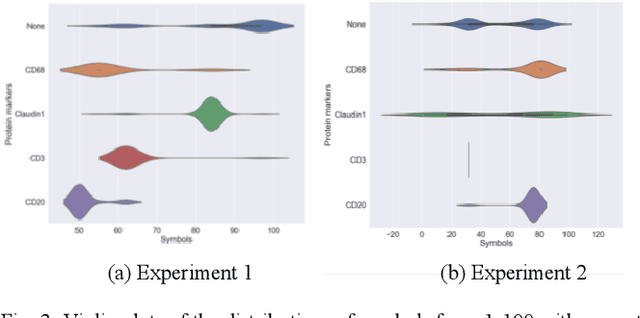
Abstract:We present ESCELL, a method for developing an emergent symbolic language of communication between multiple agents reasoning about cells. We show how agents are able to cooperate and communicate successfully in the form of symbols similar to human language to accomplish a task in the form of a referential game (Lewis' signaling game). In one form of the game, a sender and a receiver observe a set of cells from 5 different cell phenotypes. The sender is told one cell is a target and is allowed to send one symbol to the receiver from a fixed arbitrary vocabulary size. The receiver relies on the information in the symbol to identify the target cell. We train the sender and receiver networks to develop an innate emergent language between themselves to accomplish this task. We observe that the networks are able to successfully identify cells from 5 different phenotypes with an accuracy of 93.2%. We also introduce a new form of the signaling game where the sender is shown one image instead of all the images that the receiver sees. The networks successfully develop an emergent language to get an identification accuracy of 77.8%.
* IEEE International Symposium on Biomedical Imaging (IEEE ISBI 2020)
 Add to Chrome
Add to Chrome Add to Firefox
Add to Firefox Add to Edge
Add to Edge